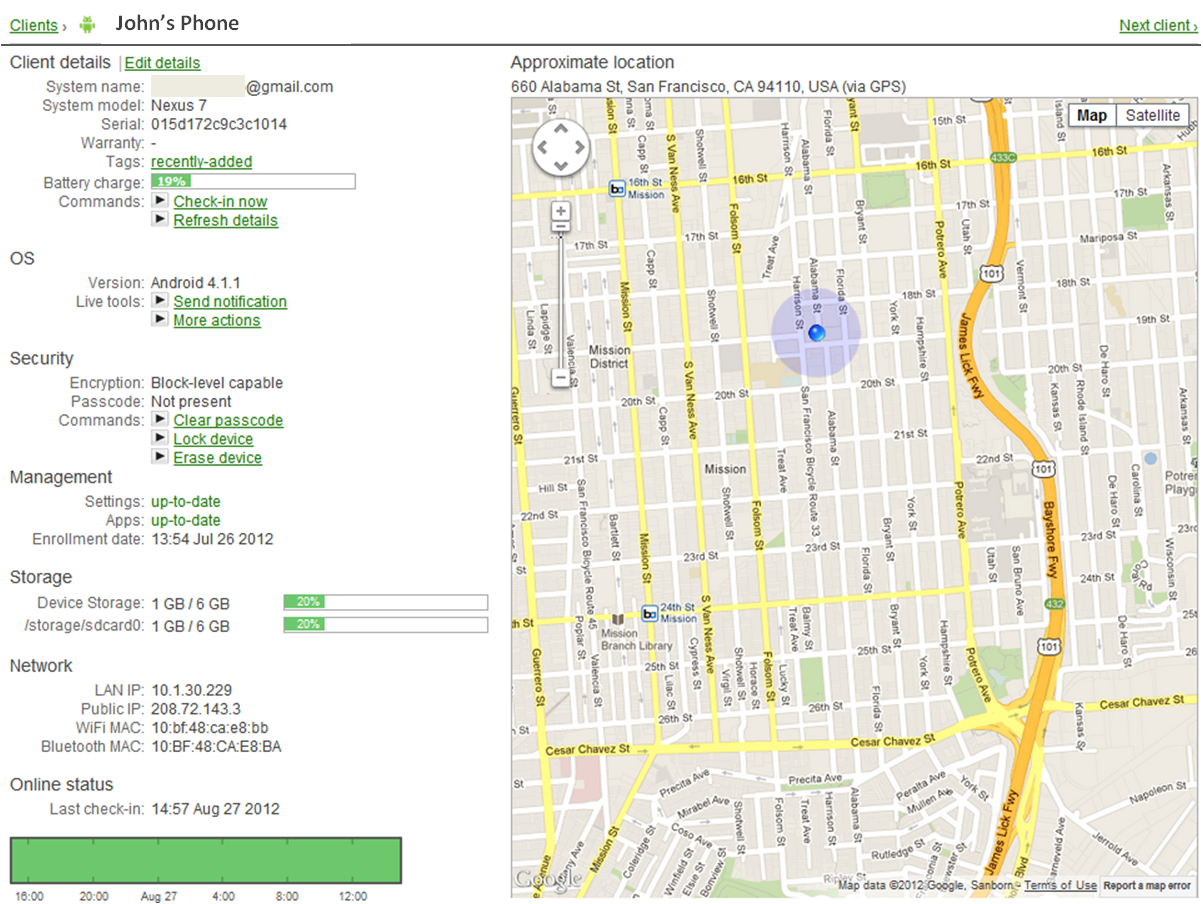Katrin Deres is a passionate blogger, and works in a marketing team at a mobile tracking company. For more information visit mSpy. Here is a guest post with some of my input covering how to protect mobile devices used by children and young adults.
Smartphones have revolutionized the way we live and are an important tool that most of us depend on daily. With that being said, a smartphone in the hands of a responsible adult is very different from allowing children access to them. Giving smart devices to children without considering its impact can spell big trouble for parents!
It is not that children cannot benefit from having a smartphone, but one of the main problems is children and teenagers have a very different perspective on how to use the technology. When adults hand a child a mobile device, they are essentially providing a powerful device, which has constant access to the Internet. This can expose children to all sorts of trouble that can affect them now as well as may come back to haunt them in later life. Some of the dangers that come with surfing the web include online predators, identity theft and cyber-bullying. It is easy to see why many parents are concerned about their children’s safety when using the Internet.
Children of The Digital Generation
 According to a recent report from the Pew Research Center, 74% of teenagers have some form of mobile access to the Internet via either a smartphone or tablet device. It isn’t just older children who are spending time wired to the Internet either. A recent study produced by Common Sense Media stated that 72% of children aged 0 to 8 years regularly use mobile devices and around a third of those are infants under the age of 2! Overall, this suggests that almost 80% of children are regularly accessing the Internet with very little adult supervision. What parents need to be thinking is how responsible are their children while using the Internet and is proper security measures put in place.
According to a recent report from the Pew Research Center, 74% of teenagers have some form of mobile access to the Internet via either a smartphone or tablet device. It isn’t just older children who are spending time wired to the Internet either. A recent study produced by Common Sense Media stated that 72% of children aged 0 to 8 years regularly use mobile devices and around a third of those are infants under the age of 2! Overall, this suggests that almost 80% of children are regularly accessing the Internet with very little adult supervision. What parents need to be thinking is how responsible are their children while using the Internet and is proper security measures put in place.
One of the largest issues with children using the Internet is that they have access to a wealth of material, most of which is not age appropriate. If a child has unfettered access to the Internet then there is nothing stopping them from looking at the pornography or graphic violence, which is found in abundance using popular search engines. It could be argued that children can be educated in what sort of sites are appropriate, but often content is mislabeled and kids can stumble upon it unwittingly. For example, searching for “chicks” could bring up young chickens or naked women.
 In addition to this, there is the danger of children encountering a predator while using social media and chat services. Children having different perspectives on appropriate behavior and less experience understanding other people’s intentions while using social media. When it comes to filling out a social media profile, kids are far less aware of the information they are releasing to the public domain. They may offer up personal details, which could be used to locate and identify them as well as put others such as their family and friends in harm’s way. Recent statistics suggest that 58% of children who have a social media profile will post information about where they live while 64% will post videos and/or photographs of themselves. What most children and teenagers don’t realize is the future impact and difficulty it is to remove such information once it is public. Examples including new teenage trends in posting naked pictures IE “sexing”, publishing photographs of underage drinking and other content that can be used against them in the future.
In addition to this, there is the danger of children encountering a predator while using social media and chat services. Children having different perspectives on appropriate behavior and less experience understanding other people’s intentions while using social media. When it comes to filling out a social media profile, kids are far less aware of the information they are releasing to the public domain. They may offer up personal details, which could be used to locate and identify them as well as put others such as their family and friends in harm’s way. Recent statistics suggest that 58% of children who have a social media profile will post information about where they live while 64% will post videos and/or photographs of themselves. What most children and teenagers don’t realize is the future impact and difficulty it is to remove such information once it is public. Examples including new teenage trends in posting naked pictures IE “sexing”, publishing photographs of underage drinking and other content that can be used against them in the future.
Finding A Solution
We know there are dangers with providing Internet access to children and teenagers however the million dollar question is what can we do about it? Since the majority of young people are using smartphones to access the Internet, an increasing number of parents are turning to mobile phone monitoring apps. It is important to look carefully at the various apps in order to choose the right one for your situation. There are some vendors offering free versions, but be aware that some of these do not work properly and many features are disabled. There are some vendors that offer full subscriptions at very reasonable monthly rates but make sure to do your research. The most reliable monitoring apps will keep track of all activity on your child’s phone including monitoring calls, tracking incoming and outgoing SMS, chat apps, photos and even provide their GPS locations. You can generate detailed reports alerting you to anything that might be a cause for concern, allowing you to either intervene or have a chat to re-educate your child on certain safety matters. There are a number of popular applications on the market, but one of the bestsellers, which also offers the most comprehensive list of features is parental control software mSpy.
Mobile device management applications also known as MDM are becoming extremely popular for both securing and controlling how mobile devices are used. Popular features include enforcing passwords, checking for jail broken devices, controlling what applications can be installed and so on. There are many popular names in this market such as Mobile Iron, AirWatch, XenMobile that are aimed at large business however I suggest a free version from Cisco / Meraki. You can find more about this HERE.
Cisco / Meraki Free MDM
You may also wish to install monitoring and filtering software on larger mobile devices such as laptops or home desktops. One popular solution that is free is a K9 Protection tool from BlueCoat. This solution offers many things including a family friendly browser filter, which can be set to block various categories including drugs, pornography, violence and so on. While parental supervision is necessary when it comes to Internet browsing, if you have a tool like this, it can allow you to relax a little and give your child some space.
Another important feature to look for is the ability to control what search engines will display. SafeSearch was designed for k-12 and can auto filter inappropriate content when using popular search engines such as Google and Yahoo. You can find tons of options for using SafeSearch online including kid friendly Wikis, how to enable on mobile devices, etc. SafeSearch is also something you can enable and enforce using content filter and MDM solutions such as the free versions previously mentioned. Make sure to include SafeSearch capable solutions as a feature requirement.
Additional Threats – Cyber Attacks
There are other threats to consider beyond age appropriate content and online predators. These days everyone knows about computer viruses and malware, but few people believe mobile devices are as vulnerable as other computer systems. If you do not have adequate protection on your mobile device, it could lead to the same negative impact as having your wallet stolen. Most people store the same level of personal data on mobile device as computers making mobile devices a highly desirable target for cyber attacks. Smartphones also use WiFi meaning they can be a bridge for malicious sources to your home or corporate network. It is important to ensure that all devices have appropriate anti-virus protection and firewalls in place including mobile devices.
We need to consider the risk of identity theft and relate it to mobile devices. This is associated with kids sharing all sorts of information on the Internet including personal details that can be stolen to clone their identity. Why would anyone want to steal a child’s identity you might ask? It is simple really. The younger the victim, the longer it takes before the crime is discovered. If a criminal is using a 10 year old’s identity, there is a very strong likelihood that it could be eight to ten years before that person even considers their credit history. The 2012 Child Identity Theft Report revealed that the number of children under the age of 5 who have been victims of identity theft has doubled from the previous year with 10.7% of all children being a victim. This makes children 35 times more vulnerable than adults when it comes to identity theft, which can cause problems in the future when applying for student loans, mortgages and even some jobs!
In summary, it is more important than most parents realize to make sure that their children are behaving responsibly online as well as protected from cyber threats when using mobile devices. There is simply no substitute for a combination of education and parental supervision, however, we cannot be with our children around the clock. This is why technology can be an invaluable source of support for dealing with these issues and keeping our children safe.





